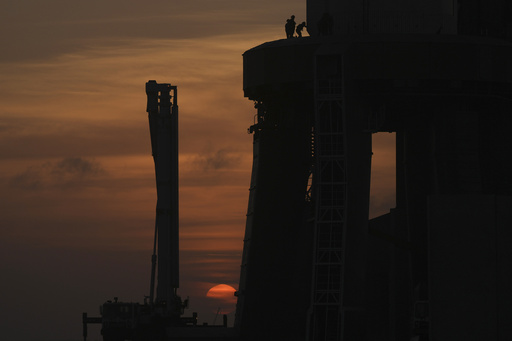
SpaceX successfully conducted another launch of its Starship rocket on Tuesday, but did not attempt to recover the booster using its large mechanical arms. Instead of catching it, the booster was deliberately sent for a splashdown in the Gulf of Mexico. This decision came shortly after the launch from Texas, just four minutes into the flight, although no specific reasons were provided for the change in plans. Ultimately, the booster landed in the water three minutes later.
According to SpaceX spokesperson Dan Huot, certain criteria necessary for a successful booster recovery were not fulfilled, leading the flight director to forgo the command to return the booster to the launch site. However, the exact issues that arose during the flight were not disclosed. Simultaneously, the empty Starship spacecraft, launched atop the booster, performed a flight pattern that took it over the Gulf of Mexico before it headed towards a planned descent in the Indian Ocean, mirroring a test flight conducted last October. The mission lasted about an hour before concluding in a controlled, albeit destructive, manner.
This recent test represents the latest attempt with the world’s largest and most powerful rocket, which SpaceX, alongside NASA, aims to utilize for sending astronauts back to the Moon and eventually to Mars. While SpaceX maintained the same flight trajectory as previous tests, several adjustments were made, including launching in the late afternoon to provide better visibility of the spacecraft’s descent during daylight as it neared the opposite side of the globe.
New objectives were introduced during this launch, including igniting one of the spacecraft’s engines in space, a crucial step for returning from orbit. Thermal protection experiments were also conducted, with certain areas of the spacecraft devoid of heat tiles to investigate the feasibility of catch mechanisms on future missions. Moreover, further upgrades are anticipated for ensuing test flights.
In a notable appearance, Donald Trump attended the launch, highlighting an increasingly close relationship between the president-elect and Elon Musk, SpaceX’s founder and CEO. SpaceX envisions a future where the entire 400-foot (121-meter) Starship can be reused, a concept that could significantly reduce expenses related to transporting cargo and personnel to the Moon and Mars while increasing the frequency of launches. The successful recycling of SpaceX’s Falcon rockets has already demonstrated time and cost savings for the company.
NASA has committed over $4 billion to SpaceX to facilitate the landing of astronauts on the Moon through Starship on consecutive missions slated for the upcoming decade. Musk has grand ambitions for Starship, envisioning the launch of a fleet that could establish a city on Mars one day. This marked the sixth occasion that a fully assembled Starship was launched since the start of 2023, and it’s worth noting that the first three attempts ended with explosions.
